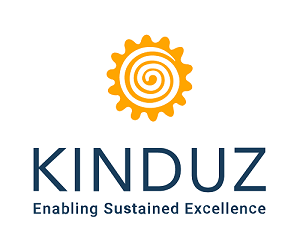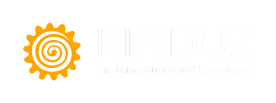Fortune 500 Corporation │ Oil And Gas │ India
Brought to you in collaboration of KINDUZ Consulting.
This is a case story from Petrocam Refineries Ltd (name changed) with headquarters located in India.
This case story highlights two key points. First, that it is easy to convince your leadership for a change if you could communicate that the financial benefit of the change is significantly higher than the cost incurred to change. Second, that it does not necessarily require huge efforts to bring in huge business benefits. The key is to identify the low hanging fruits and pursue them.
Background of the project
Operations head of Petrocam Refineries Ltd was concerned with the inefficient use of cutter to increase viscosity of Furnace Fuel Oil (FFO). FFO is a by-product in the refining process and is typically used as a fuel in the refinery furnaces. Being a highly viscous fluid, it does not flow freely. If you want to transfer FFO from one place to other you will have to make it less viscous (or in other words, more fluid). One way of doing it is by adding fluids which have very low viscosity. The low viscosity fluid, in effect, cuts the highly viscous FFO. Hence the name cutter.
Well, you might say why not use Gasoline (Petrol) as a cutter. Though Gasoline is an effective cutter, using Gasoline as a cutter is a loss to business. Because if you use 1 unit of Gasoline as cutter, you loose revenue for the 1 unit of Gasoline by not selling it to customer. The problem of the Operations head was that Petrocam was using cutters which were a loss to business. And so, as a Lean and Six Sigma Green Belt project, the problem was given to a team of 2 Petrocam employees (Mr. Danish and Mr. Dominic).
Obtaining Voice of Customer (VOC)
The team started with capturing VOC from all the internal customer. They undertook Gemba walk and spoke to operations, technology, scheduling and blending officers to understand the challenges. Below is the summary VOC:
Technology Department: “Please use low viscosity cutter in FO Pool”
Blending Department: “Quantity of right cutter was lower than demand, especially when bitumen tanks were full”
Operation Department: Again talked about use of low viscosity cutter.
The team came back to their Six Sigma coach beaming with the obtained VOC. Quietly, the coach asked two questions: “Just how low is low viscosity?” and “How much quantity is the right quantity of cutter?”
The team started on a 30 min discussion route to find the answer to the questions asked by the coach. As expected, they did not reach a conclusion because they were not the process experts. However, they realized that they could have asked more and better questions from Technology, Blending and Operations to understand the unsaid requirements better.
The above statements on “unsaid” requirements are natural to an organizational environment. Only if we question the said statements, we are in a better position to address the problem at hand. The team had learned the importance of questioning and putting down requirements into specific words. And this leads us to the CTQ (Critical to Quality) of the project.
Converting VOC to CTQ (Critical to quality)
The team re-worked on the process VOC and asked specific questions from the internal customers. The team also had a detailed discussion with the Technology team on what is happening outside in the industry. This process of VOC and benchmarking brought out two findings:
- That utilizing one of their product, known as Heavy Kerosene (HK), as cutter is recommended by similar organization and research papers.
- And that, much to the team’s surprise, Petrocam already had a business plan target of maintaining HK to FFO ratio in between 25% to 30%
Typically, at this point the project teams jump and say that they have found the solution. But the coach had few words to say:
“But how do you know for sure that maintaining HK to FFO ratio in between 25% to 30% will solve your problem? Why can’t it be in between 20% to 24%?”
He continued, “Maintaining HK to FFO ratio is not a solution. It is an outcome. Petrocam already has a Business Plan target. And yet it is not being achieved. Why? Finding answer to this why will help us reach the solution.”
The coach was only pushing the boundaries by giving them a different perspective. The teams followed the trail of thoughts and dug deeper. They discovered that the refinery was already using a complex modelling system which could help them predict changes in quality and quantity of products based on certain input parameters. Varying the percentage of HK to FFO from 25% to 30%, the modelling system showed that there is no change in quality and quantity of other products and that there was an increase of 0.7% (by weight) of the refinery gross margin. They got this reviewed by senior members of technology and operations team. And everyone nodded. They now had a proof that the coach had requested them to find.
And so “Percentage of HK used in FO pool” was selected as the CTQ of this project.
Visual look at the Data

Figure 1: A graphical representation of variation in the quantity of HK used in FFO. There is significant variation in the quantity (p value is less than the significance level of 0.05)

Figure 2: A graphical representation of Percentage of HK used in FFO. Since, p value is more than the significance level of 0.05, we conclude that there is significant variation in the percentage. The median percentage is 6.71% which way below the target of 25% – 30%
To define the problem and baseline the project, team collected data on both quantity of HK used in FO pool and percentage of HK used in FO pool, for a six months period.
And now it was time to focus on the second question highlighted by the coach. What were the reasons for not achieving the business plan target of 25%-30% target of HK to FFO ratio?
After creating graphical summary using Minitab, team inferred that average HK absorption in total FO was 199.73 MT/D (7%) based on the data of past six months. This lead to low distillate yield of refinery because of low effectiveness of the cutter.
Probable Causes
Team brainstormed on the possible causes and put them in the structure of a fishbone diagram. The fish bone diagram was populated in discussion with various stakeholders. The fishbone diagram had two recurring causes:
- Unavailability of HK storage facility in blending area
- Blending HK to FFO was responsibility of the operations team
The first one was a problem of constraint. The second was a problem of proper communication between two processes. The team met the process owner with a few possible solution in mind.
An interim discussion with Process Owner
With the idea of increasing HK storage facility in blending area, team met the process owner (Mr. George). And this is how the discussion went by.
Danish: One of the key cause of the problem is unavailability of HK storage facility in blending area. We recommend that the pipeline flow from one of the plant be increased from 200 MT/D to 800 MT/D (Metric Tonnes per Day), we should be able to maintain the ratio of HK to FFO. We can also provide a storage facility at Blending Area
George: But my understanding of the pipeline tells me that it is too old a structure to sustain a load of 800 MT/D.
Danish: Can we build another pipeline structure?
George: Sorry, not possible. It will cost around a million to get it done. And I don’t have the budget for this year.
Dominic: The one million will be a one-time investment. If we get it done, then there is cost benefit of approximately one billion through 0.7% increase in the refinery gross margin.
George: (After a pause) May we can discuss this with the senior leaders of the refinery and take a call.
Dominic: Also, there is a spare tank in the blending area which could be used as HK storage tank. This will help us to ensure HK to FFO ration even if there are variations in HK production from plant.
George: Okay, give me the details. Let me see what can be done.
Creating Solutions
Team came back to George with a detailed plan of changes. The plan looked something like the diagram below:

Figure 4: The solution came in the form of additional pipelines joining different blending streams and product tanks. The red lines were short term recommendation and were picked up immediately. The green lines were long term recommendation and taken up to be completed by the financial year end. Total annualized benefit from the implementation was INR One billion. And the cost of implementation was approximately 0.5% of the annualized benefit.
George brought in his key team members and discussed the new plan with them. There were few negative sentiments. However, George convinced them easily. He was aware of the business value (an annualized benefit of one billion) that these changes could bring in. The new process was also lean: There was reduced dependency on communication between operations and blending. Because of the HK storage facility in blending, blending team was able to control HK to FFO ratio by themselves.
In the above diagram, the red lines are the short term recommendations and the green lines are the long term recommendations. In summary, the short term recommendation was to connect different tanks and blending units through pipelines. This job was initiated right away and the total cost of implementation was only 0.1% of the annualized benefit of INR One billion.
We won’t go into the detail of the solution here. The solution is always easy. Finding the solution is difficult 🙂
Cutting the stubborn FFO was now easy.
Now company could produce more value added HSD and less FO. And the team could also pick new improvement areas as project. They were familiar with Six Sigma tools and techniques to solve a business problems.



